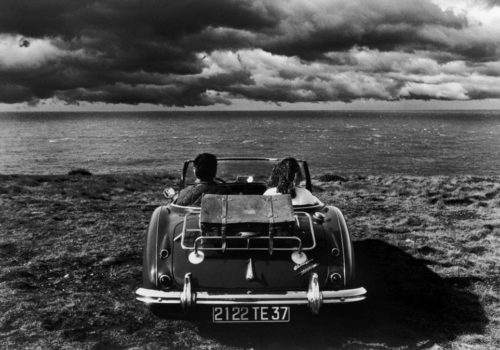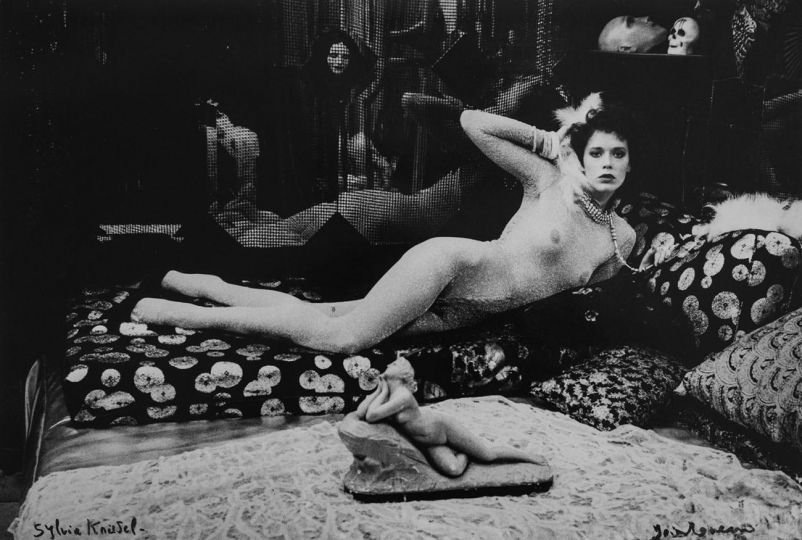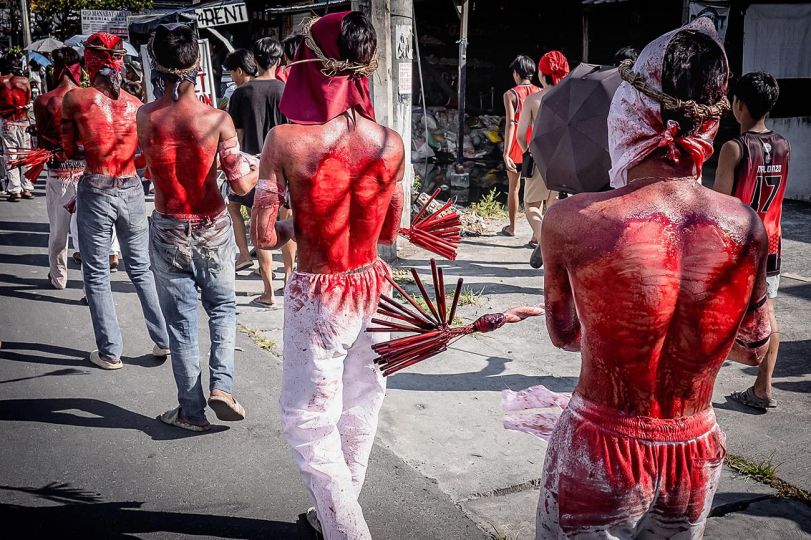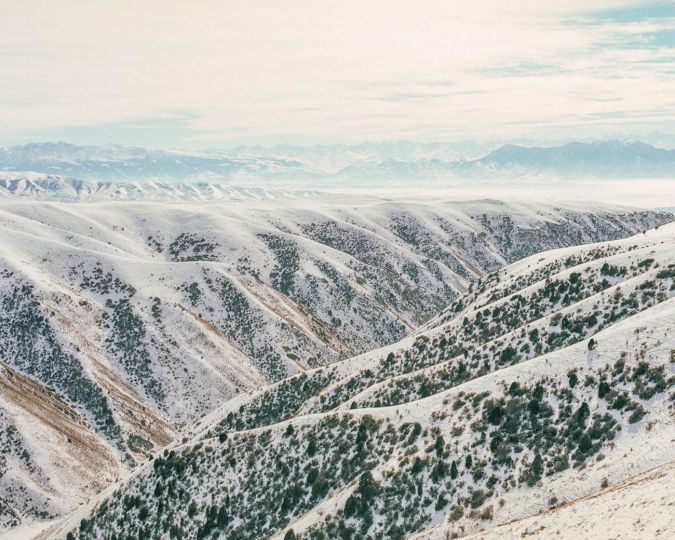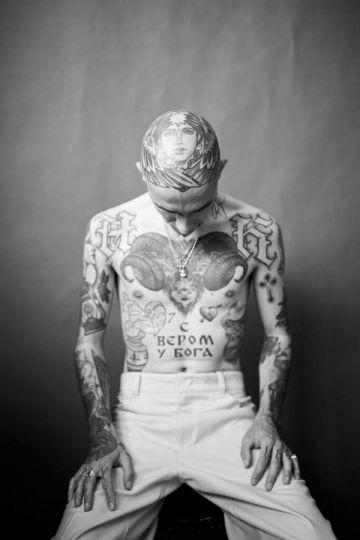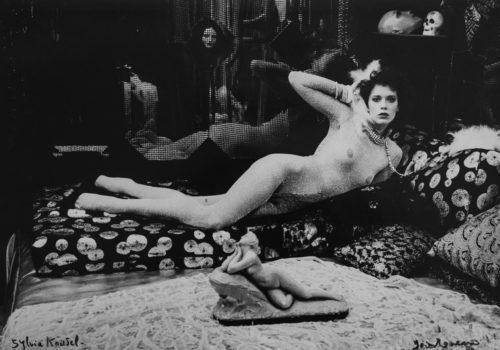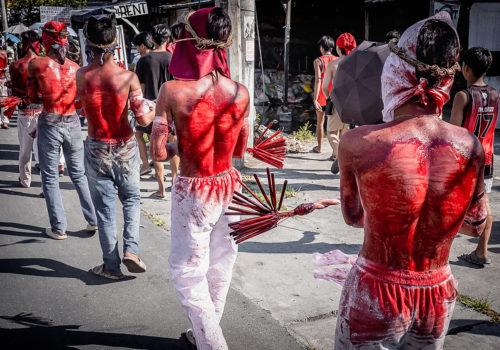Stories of a photographer: single images each of them telling a whole story, but also stories that unfold through many images forming an intense structure. Gianni Berengo Gardin always photographs following this double strand , depending on circumstances and the instinct of his vision. Anyway, it happens that anyone can read his images, according to their various levels of meaning. And, as they are all stories that matters, they deeply involve the viewer.
Usually there are more “single” snapshots in exhibitions, while stories unfold, image after image, in photographic books that are a large part of his professional history . “They are the ideal space for a storyteller like him, who needs a suitable space for an extended narrative,” says Denis Curti , curator of the exhibition and artistic director of the Casa dei Tre Oci, in Venice . The exhibition “Storie di un fotografo” is in Palazzo Ducale in Genoa, with a new section dedicated to this city, with pictures (many unpublished), taken between 1969 and 2002. A tribute to Genoa and to its port, often photographed at the invitation of Renzo Piano, as a crossroads of parallel stories: workers, views, ships and the idea of a landscape that turns into feelings. The exhibition displays stories connecting one another: there is Venice, where he learned photography, then Milan, where he began his professional history.
“There are mental asylums, with “Morire di classe” (a shock for the crudeness of the images showing the dramatic state of people with mental illness, yet never forgetting their dignity), religious rites and the experience with Renzo Piano. There is his reportage “Inside the houses”, which contributed to renew the modern vocabulary of photography, but also New York, Vienna, Paris… His images communicate without words and beyond any prejudice”, adds Curti. Gianni is also fascinated by the subject of work, which he records by focusing on the workers, with a direct narrative and a strong social commitment; but also from the perspective of large companies, such as Olivetti or Fiat .The result is a complex portrait of the production world in Italy. More than 120 photos are on stage in Genoa, an interesting analogical journey among more than one million and a half prints in his immense archive. “I selected them together with Denis Curti, rereading all my shots, including the unpublished ones”, says Berengo Gardin . The result is an harmonic sequence of images and themes, because “Gianni told – and continues to do so – events that marked the history of Italy. His images – now almost visual archetypes for Italians – are a cross section of political, social, economic and cultural life of the country from the boom years to now”, adds Curti.
“Documentary photography preserves important moments of our culture. Some photos are important “right now”, addressing issues of immediate interest . Others are going to become important after years, showing things from the past that no longer exist . And in this sense I want to be a witness of my time”, says Berengo Gardin.
He also states to be only an honest craftsman of photography, thinking he had done nothing exceptional, but the fact remains that, for example, in 1975 Cecil Beaton mentioned him in the book The Magic Image: The Genius of Photography from 1839 to the Present Day. And that he was the only photographer to be mentioned by E. H. Gombrich in the book The Image and the Eye.
His stories, as we already said, are often collected in books: over 250 photographic books in a half-century career. His most recently publication is ‘Il libro dei libri”(Contrasto ed.), as an overview on his work.
His images are characterized by a sort of “French look” somehow close to the decisive moment by Cartier-Bresson, but also by his particular ability in foreseeing what’s going to happen. There is a touch of irony and, often, complicity in them, which makes his pictures close to the work of Robert Doisneau.
As the historian of photography Italo Zannier says, “when Berengo Gardin was at his very beginning as a photographer, in Italy a debate was still insisting among the so-called “formalists”, “neo-realists” and “photojournalists”. (…) Everyone claiming to photograph its cultural significance. Gianni, in those years, was in Paris, (…) where his eye was driven toward the great French humanist photography with Cartier –Bresson, Brassaï , Izis , Doisneau , Boubat, Kertész and Willy Ronis, not to mention a maître à penser such as Romeo Martinez, patron of Camera magazine”. “The American school was very important for me, starting from the magazines my uncle sent me from USA. But I feel closer to French photographers, especially to Willy Ronis who taught me technique and a new way of thinking on photography”, says Gianni.
His reportages are always made by news and stories, with references to art history, to the contemporary debate on architecture and neorealism. From reality “he select a fragment that produces knowledge, a “different look”, just telling a story . With the accuracy of the journalist”, says Luca Borzani , president of Genova Palazzo Ducale Fondazione per la cultura. And in black an white, we add, for “black and white are two beautiful colors, not to mention the gray. Further more, color distracts”, used to say Berengo Gardin.
The exhibition is promoted by Genova Palazzo Ducale Fondazione per la cultura in collaboration with Tre Oci, Civita Tre Venezie and Fondazione Forma; it is organized by Civita Cultura.
The catalog, with over one hundred duotone images is published by Marsilio Editori.
Biography
Gianni Berengo Gardin was born in Santa Margherita Ligure in 1930 and began to take pictures in 1954. He used to live in Rome, Venice, Lugano and Paris. In 1965 he moved to Milan and devoted himself professionally to reportage, social research, architecture and environment photography. His first pictures (he wasn’t a professional yet), were published in 1954 in “Il Mondo”, by chief editor Mario Pannunzio. He worked with leading Italian and international magazines, with Touring Club Italiano and Istituto Geografico De Agostini. He also worked closely alongside the industrial world (i.e. Olivetti, Alfa Romeo…) on company monographs. Then, photographic books: he created more than two hundred of them.
Berengo Gardin was awarded several prizes, such as a World Press Photo (1963), the Brassaï prize (1990) at the Mois de la Photo in Paris, the Leica Oskard Barnack Award at the Rencontres Internationales de la Photographie in Arles (1995) and the Lucie Award for Lifetime Achievement (2008)
He has had around 200 solo exhibitions in Italy and abroad, and his pictures form part of collections in various museums and cultural foundations, including the Museum of Modern Art in New York, the Bibliothèque Nationale de France and the Musée de l’Elysée in Lausanne.
In 1972 Modern Photography magazine included him among the ” World’s Top 32 Photographers” . Italo Zannier described him as the ‘most eminent photographer of the post-war period’. He is also among the eighty photographers Henri Cartier-Bresson selected for the exhibition ‘Les Choix d’Henri Cartier-Bresson’.
In 2009 he was awarded by the University of Milan an honorary degree in Art history and criticism .
EXHIBITION
Gianni Berengo Gardin – Storie di un fotografo
February 14th – June 8th 2014
Sottoporticato di Palazzo Ducale
Piazza Matteotti, 9
16123 Genoa
Italy
Opening hours: Tuesday to Sunday: from 10am to 19pm
Monday: from 2pm to 19pm
Catalogue: contributions by Denis Curti and Italo Zannier, Marsilio Editori (208 pages)
http://www.palazzoducale.genova.it
http://www.mostraberengogardin.it

